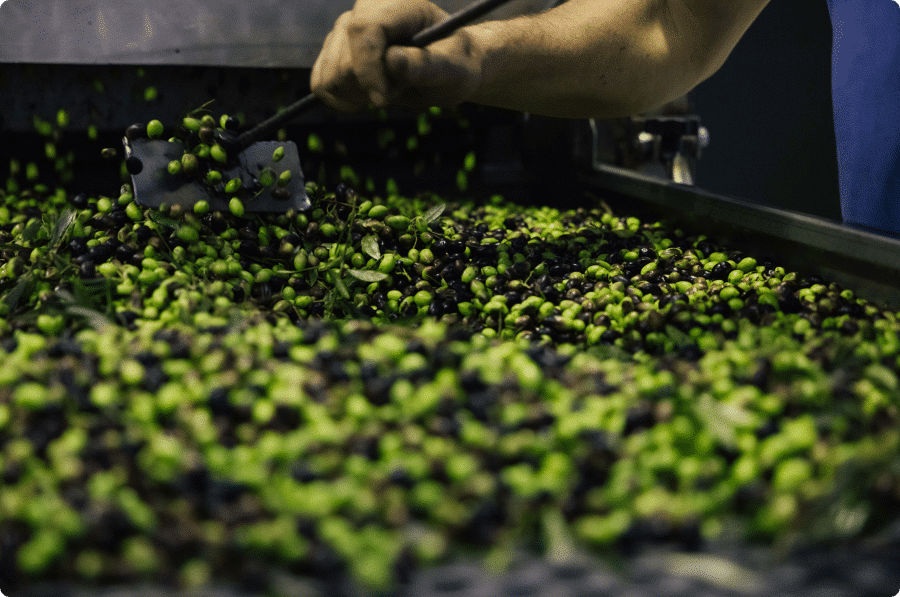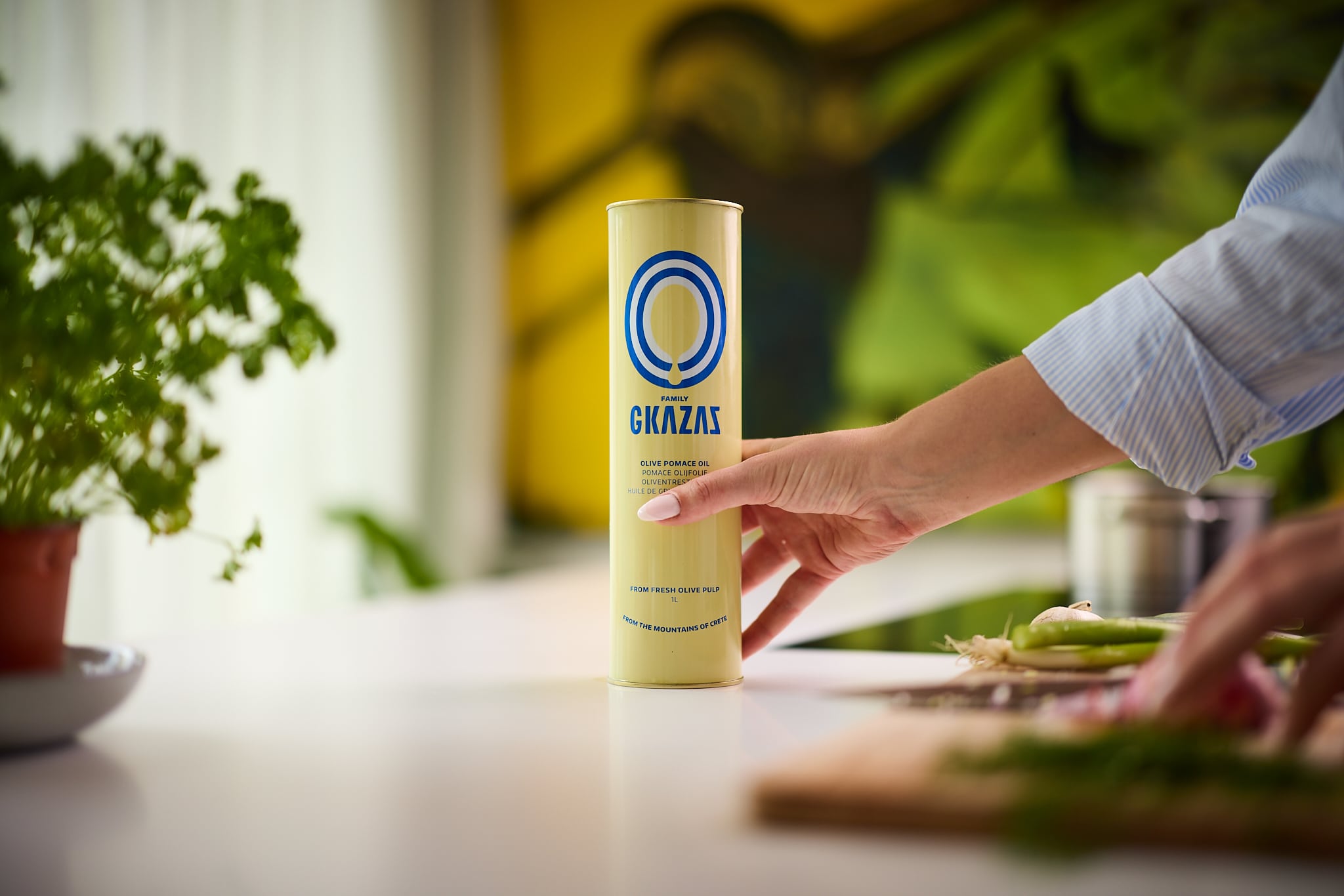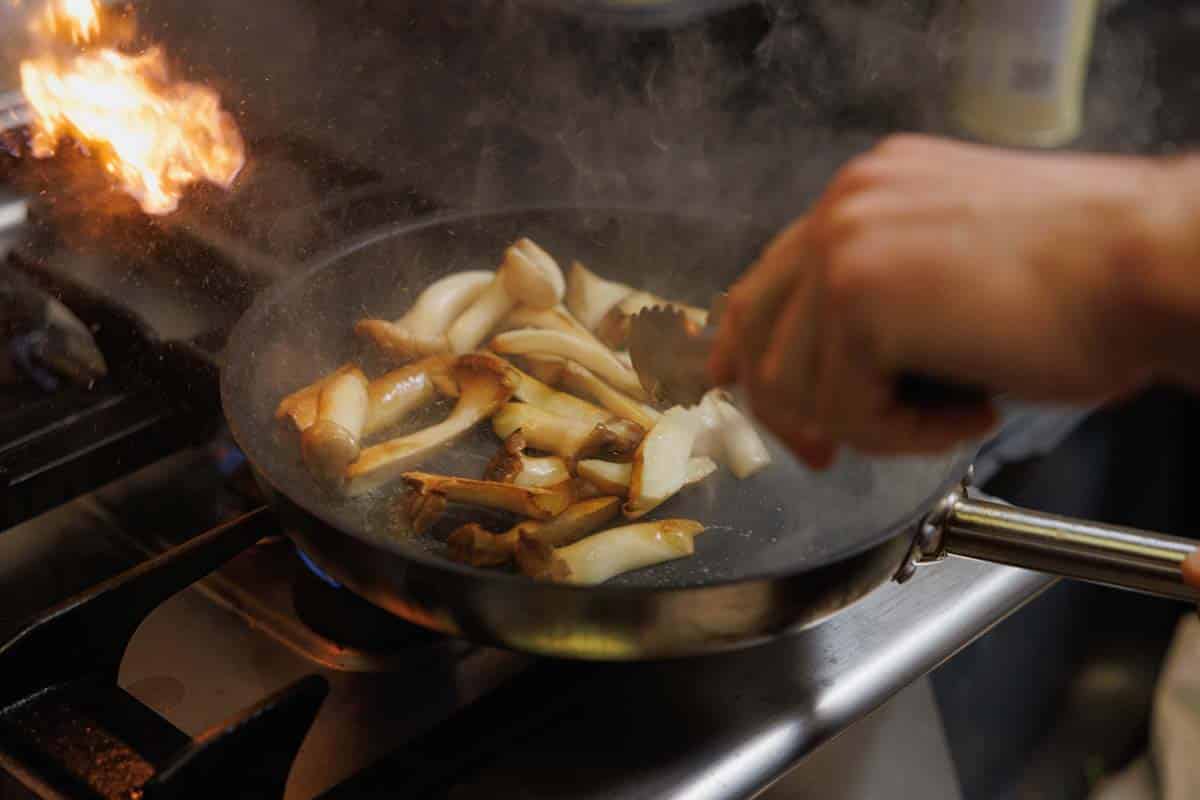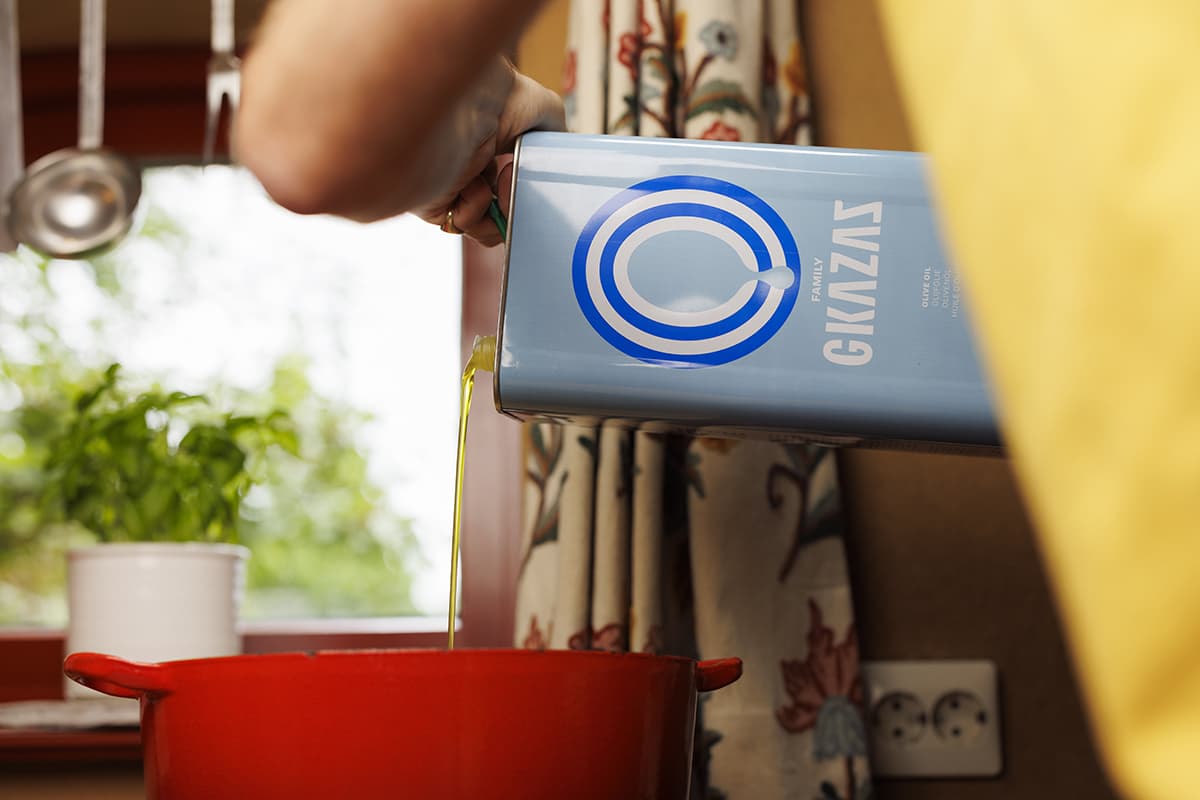Pomace olive oil is on the rise! Why? Maybe because it’s more affordable due to the way it’s produced. But how is pomace olive oil made, and what can you do with it?
How is pomace olive oil made?
How is pomace olive oil made? There are several ways. Let’s start by explaining how we do it. After pressing our (organic) extra virgin olive oil, fresh pulp remains. From this pulp, we naturally produce our pomace olive oil — ensuring that nothing from the original product goes to waste!

What does that production process look like? We heat the pulp to 60 degrees Celsius. This way, we extract raw pomace olive oil and filter and steam it – without using any chemical processes. To enhance the flavor and add more nutrients, we mix in 10% organic extra virgin Gkazas Olive Oil. A 100% pure and natural product! Now you know what pomace olive oil is and how it’s made.
You can also produce pomace olive oil in a more “efficient” way. To refine raw pomace olive oil, hexane can be used. This is common in many cheaper pomace olive oils. Hexane is a chemical solvent that’s not suitable for consumption. That’s why we’re not fans of this method — we keep it all-natural!

What can you use pomace olive oil for?
Now that you know how pomace olive oil is made, what can you use it for? That’s entirely up to you. Its mild flavor means it doesn’t overpower your dishes. So if you’re frying or sautéing and don’t want the taste of olive oil to dominate, pomace olive oil is a great option.

Another benefit: you can safely heat this oil up to 260 degrees Celsius, making it ideal for high-temperature cooking. For cold use — like dipping bread, drizzling over salads, or blending into sauces — we recommend (organic) extra virgin olive oil instead. It has more flavor and is rich in healthy nutrients such as vitamins, minerals, polyphenols, and antioxidants.
In short, pomace olive oil is a healthy, versatile kitchen staple. Our 1-liter can of pomace olive oil is now available at Albert Heijn. And for the true fans, we also offer a 5-liter pomace olive oil can.
Want to learn more about different types of olive oil? You’ll also find information abou
















